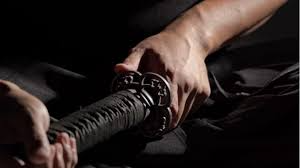Which Demon Slayer Character Draws His Sword the Fastest?

The world of Demon Slayer has fans hooked on its wild sword fights, where the speed of each swing can decide who lives and who dies. While the show is packed with awesome battle scenes, one topic keeps bringing viewers back for more: which fighter can pull their Nichirin blade from its sheath the quickest?
This debate is more than just cool animation or a dramatic moment. For a demon slayer, the speed of the draw is the one thin moment where a life hangs in the balance. The old-school iaijutsu art—drawing the sword and striking in one smooth motion—blends with breathing styles, turning normal reflexes into something that feels almost magical.
To figure out who’s the fastest, we need to look closely at a few things: how well a character has mastered their breathing, their physical strength and stamina, their concentration, and the special traits of their Nichirin sword. When all of these come together, each fighter creates a unique way of moving, and that speed can look very different from one battle to the next.
The Mechanics of Supernatural Sword Drawing
Demon Slayer takes sword fighting and turns it up to eleven. The characters use breathing-based techniques to push their bodies and blades beyond normal limits. When a slayer unsheathes their Nichirin sword, it shows their breathing style, physical gifts, and years of hard training all at once.
At a basic level, the draw combines stance, how they hold the hilt, body twist, and a burst of pent-up energy released through breath. In regular kendo, speed comes from muscle memory and endurance. In the series, fighters channel elemental forces to make every movement a blur.
Breath techniques lay the groundwork for the speed. Water style gives smooth, flowing control; Flame style ignites shocking bursts; Thunder style brings a strike so fast it seems to teleport; and Wind style twists directions even the eye can’t follow. Each style creates a draw that’s best suited for different battlefield chances.
The Nichirin blades also play a role. Their changing colors show the elemental bond they share with a slayer’s breath. When breath and blade resonate, friction drops and instinct kicks in, so the sword sings out faster. Top swordsmiths make every blade match the user’s fighting soul, fine-tuning the weight and balance so the draw feels like the hilt has its own will.
Character Analysis: The Speed Specialists
Zenitsu Agatsuma: The Thunder Prodigy
Whenever the fastest draw in Demon Slayer comes up, Zenitsu Agatsuma takes center stage thanks to his command of Thunder Breathing’s first form. His blade, shimmering gold, surges with crackling electricity that turns the simple draw of the sword into a strike so quick that the fight can be over before the enemy even knows a blow was struck.
Zenitsu’s talent plays off the twin forces of fear and muscle memory. When awake, his shaky nerves freeze him. Yet in the thick of sleep, a decade of rigorous practice surges forth, allowing him to move faster than his waking self can ever dream of doing. The result is a draw so quick that even Zenitsu finds himself in awe once he wakes up and replays the fight in his mind.
The first form of Thunder Breathing, “Thunderclap and Flash,” is economy in action: blade drawn, the arc of the slash, and the kill—everything in a single, flawless motion that leaves no trace of hesitation. Zenitsu uses every ounce of his strength, discarding all surplus movement. The effect is so extreme that bystanders are left only with the memory of afterimages racing alongside bright streaks of lightning.
Zenitsu Agatsuma: The Lightning-Fast Slayer
Zenitsu’s combat style shows exactly how he can pull his sword and land a hit before anyone, including his target, can react. When he faces the spider demons, his draw looks like a magic trick; it happens before breath stops, and the enemy’s guard still hasn’t moved. Anyone watching sees the same and thinks he’s teleporting. Thanks to his Thunder Breathing, his already breakneck speed becomes a carving blast, splitting flesh as easily as air.
Muichiro Tokito: The Mist Hashira’s Whispering Edge
Muichiro’s Mist Breathing isn’t about smashing speed; it’s about sneaky, perfect cuts. When he draws, the thin white blade barely touches the air. Mist curls around it, making the motion vanish and the blade look like it was never swung. The youngest Hashira shows that the quietest attack can slip through the strongest guard—no thunder, no flash, just silence.
His sword can instantly move from guard to swing, and the incoming attack never feels real until there’s light and blood. The mist hides the exact moment he lets the blade go; the enemy sees only a swirl and believes it’s the hit. He already stands behind, already won. Multiple afterimages flash at once, tricking the enemy’s eyes, but the real cut is deeper and from the side no one was watching. Measuring how fast he is becomes a puzzle; he only cares that he’s already inside his opponent before anyone sees him move.
Muichiro Tokito: The Mist Hashira’s Blinding Edge
Facing Upper Moon foes, Muichiro reveals attack sequences that blend speed and deception so seamlessly, foes never fully register the strike until it’s too late. The quiet youth’s sharp facial features hide years of training boiled down to instinct, letting him unveil powerful cuts that leap from the sheath faster than even seasoned Hashira can follow. Muichiro’s blade flashes like a gust of wind, and the injury appears a heartbeat later.
His mastery of Mist Breathing means he commits to no single direction until the final moment. Demons trying to read his stance see only shifting haze, then face a violation of their personal space that costs them limbs. By the time his guard relaxes, he’s already alighted on the next opening. Upper Moon corpses testify to the speed and confidence of a fighter whose youth only sharpens his drive.
Giyu Tomioka: The Water Hashira’s Flowing Strike
Giyu Tomioka embodies the deep channeling water body through his every movement, letting the blade’s length of steel answer the call of the moment. The Water Hashira’s katana rises from the sheath with a whisper, carving arcs of cerulean mist that bend and return with the calm of a river while gathering an undercurrent of gathering velocity. Each exhaled breath knits posture, balance, and blade alignment into a single, unbreakable wave.
Giyu’s art grants him the freedom to quicken beat or relax body tempo on command. Against lesser foes, he might create a single cut that counters attic long-range blows yet never seem hurried. Confronted with Upper Moon danger, however, the same hands birth sequences too brief to perceive, swallowing armored heads and snapping limbs like dried twigs. Such metronomic variety means no battle ever unfolds the same way twice.
At the peak of his mastery, the eleventh Water Form, “Dead Calm,” emerges like a mirrored lake touched not a single ripple. Reeling impacts rain down from every angle, yet the blade rises to deflect each one, redirecting wicked arcs into open air or abdominal gaps, then shifting back to whatever stance the next instant demands. Giyu finishes these counters even while unoccupied, already waiting to cut back down its already parted throat.
Giyu Tomioka: The Unmoving Blade
Giyu’s cool, quiet exterior hides a level of reaction speed that seems almost unreal. When a split second could change a fight, he can draw and swing his sword faster than most can see. His fights against Upper Moon Akaza demonstrate that he can keep up in a long battle, where a mere flash of speed can end a life. For him, it’s not about outpacing everything; it’s about being steady, knowing exactly when to move, and letting consistency win.
Tanjiro Kamado: The Forged Flame-Wielder
Tanjiro’s sword-drawing style is a story of constant change. At first, he sticks to Water Breathing, where each unsheathing is quick enough to cut through Lower Moon demons. The black blade is light yet strong, bending to the Wind and Mist styles he learns. The real shift comes when he first grasps the Hinokami Kagura. The same motion now channels the sun itself.
After that, his blade pops out of the sheath with a force that seems to roar. The arcs of light and heat that trail the blade can cleave to the bone. By the time he meets the final demons, every motion is a blend of fear, hope, and sheer practiced perfectness. Lightning seems to spark through his muscles.
He is also a strategist. He watches, studies, and then draws his sword with a speed that fits the enemy he faces. Against a giant, every step is a feint. Against a fast foe, the blade is already in motion before the opponent thinks to move. Intelligence fills in the gaps where pure speed might fall short.
Defining the Ultimate Speed Champion
When I dug into the fight scenes, the body mechanics, and the records scattered through the series, there was no doubt that Zenitsu Agatsuma is the fastest when it comes to drawing his sword in Demon Slayer. His Thunder Breathing lets him unsheathe his blade with a rapidity that beats everyone else when the judge is only speed.
That said, being the “fastest” isn’t a simple trophy you hang on a wall. Speed comes in flavors. Zenitsu wins the battle for the fastest instant-draw, but Muichiro Tokito makes a case with his ultra-predictable motion that seems to outrun Zenitsu’s first strike because he’s already judged the opening.
Tanjiro, on the other hand, regularly performs in longer battles and gains pace with each successful swing, effectively ramping up his own speed even if his first unsheathe isn’t explosive. Meanwhile, the Hantengu clones show that magic-like teleport hops can cover a lot of ground, but they don’t qualify as sword-draw speed because no blade actually comes out.
At the end, Zenitsu wears the crown for the fastest unsheathing moment, but how we crown that champ is up for debate depending on the slices of speed we care about.





